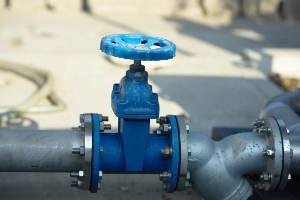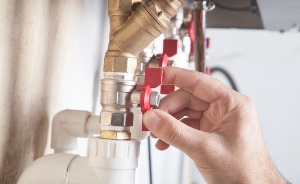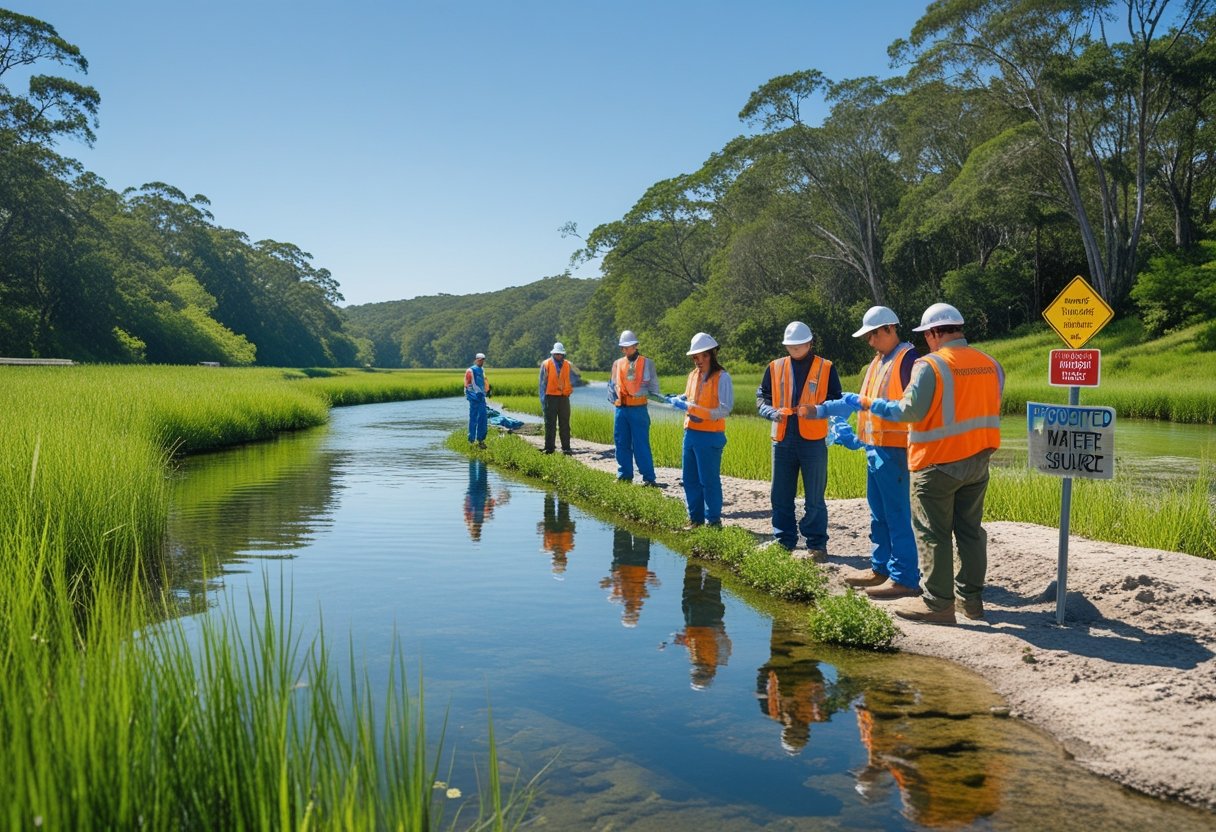Backflow preventers are essential devices designed to protect your drinking water from contamination caused by backflow, a situation where non-potable water flows back into the clean water supply. Understanding the functionality and importance of a backflow preventer can safeguard your home or business from potential health risks. With increasing regulations surrounding water safety, having a properly installed and maintained backflow preventer is not just recommended—it's vital.
In San Diego County, the water supply faces various risks, and a backflow preventer acts as your first line of defense. Pacific Backflow specializes in reliable and responsive backflow testing, ensuring your systems are compliant and functioning correctly. Regular testing and maintenance of these devices can prevent costly repairs and ensure safe drinking water for your family or customers.
Whether you need installation, testing, or repairs, it is important to act quickly when dealing with backflow preventers. With nearly fifty years of experience, Pacific Backflow is committed to protecting your water supply and maintaining compliance with local regulations, keeping your peace of mind intact.
Understanding Backflow and Its Risks
Backflow occurs when water reverses direction in the plumbing system, risking contamination of potable water. This can be due to various factors, including pressure changes. Understanding these risks is vital for maintaining water safety and compliance with plumbing codes.
What Is Backflow?
Backflow is the unwanted reversal of water flow in a plumbing system, which can allow potentially contaminated water to enter your clean water supply. It typically occurs in two main scenarios: back-siphonage and back pressure. Back-siphonage happens when there is a drop in water pressure in the supply line, effectively siphoning water back into the system. On the other hand, back pressure occurs when the pressure in the distribution system exceeds that in the supply line.
Causes of Backflow in Plumbing Systems
There are several causes of backflow that you should be aware of. Improper pipe sizing can create pressure imbalances, leading to backflow situations. Cross-connections between potable water and non-potable sources, such as irrigation systems or industrial processes, also pose significant risks. Additionally, changes in the water main pressure due to maintenance or emergencies can cause unexpected backflow. Awareness of these causes allows you to take proactive measures, such as installing backflow preventers to mitigate risks.
Health and Safety Risks of Contaminated Water
Contaminated water poses severe health risks, potentially leading to illnesses caused by bacteria, chemicals, or other harmful substances. Even small amounts of contaminated water can result in serious health consequences. Vulnerable populations, including children and the elderly, are particularly at risk. Regularly inspecting and maintaining your backflow prevention devices is crucial to protect against these hazards. Ensuring your water supply remains safe is not just important for comfort but essential for health.
Legal Requirements for Backflow Prevention
Many regions have established plumbing codes that mandate backflow prevention measures to ensure safe drinking water. These regulations often require homeowners and businesses to install backflow preventers and undergo regular testing. In San Diego County, for instance, compliance is enforced to protect the community's water supply. Failing to adhere to these requirements not only compromises water safety but can also result in substantial fines. Understanding these legal obligations helps you ensure that your plumbing systems are up to code and functioning properly.
Backflow Preventers: Purpose and How They Work
Backflow preventers are essential devices designed to protect your potable water supply from contamination. Their functionality ensures that water flows only in the intended direction, preventing the reverse flow of potentially hazardous substances into your clean water system.
Role in Backflow Prevention
Backflow occurs when water flows backward in a plumbing system, which can lead to contamination. The role of a backflow preventer is to stop this reverse flow. These devices utilize check valves, which allow water to flow in one direction and prevent it from reversing. Some devices also include relief valves that release excess pressure, maintaining the system's integrity and preventing backflow caused by fluctuations in water pressure.
Basic Operation and Components
Backflow preventers operate through a series of components designed to control water flow. At the heart of these devices is the check valve, which is tasked with blocking reverse flow. When water travels in the intended direction, the check valve opens. If backflow attempts to occur, the valve closes, stopping any contaminants from entering the system. Many backflow preventers also incorporate a pressure relief valve, which alleviates any excess pressure, ensuring safety. Regular maintenance by a licensed plumber guarantees these components function effectively.
Common Applications in Residential and Commercial Settings
You will find backflow preventers used in a variety of settings, from residential homes to large commercial buildings. In residential areas, they protect drinking water from agricultural runoff or other contaminants. In commercial settings, these devices safeguard water supplies in labs, industrial facilities, and irrigation systems. For reliable backflow prevention services, consider partnering with professionals like Pacific Backflow. They serve all of San Diego County, ensuring that your backflow devices are installed, tested, and maintained according to local regulations. This ensures your water supply remains safe and compliant.
Types of Backflow Preventers
Backflow preventers are essential devices that protect potable water supplies from contamination. Understanding the various types will help you choose the right one for your system. Each type serves a specific purpose and is suited for different applications.
Atmospheric Vacuum Breaker (AVB)
The Atmospheric Vacuum Breaker (AVB) is a simple and economical choice for preventing backflow. It operates by allowing air to enter the system when there's negative pressure. This air breaks any siphon effect that may occur, preventing contaminated water from flowing backward into the potable supply.
AVBs are ideally used in applications where the risk of backflow is minimal. They are not suited for continuous pressure situations, making them a good choice for irrigation systems and hose bibs. Installation requires careful placement above the highest outlet to function effectively.
Pressure Vacuum Breaker (PVB)
The Pressure Vacuum Breaker (PVB) combines the features of an AVB and a valve to provide enhanced protection. It maintains a closed position under normal pressure but opens to allow air entry when a drop in pressure occurs. This prevents backflow without releasing water, making it suitable for irrigation systems.
PVBs are more versatile compared to AVBs and can handle intermittent pressure. They must be installed at least 12 inches above the highest downstream outlet. Regular maintenance is crucial to ensure that the air inlet valve remains clean and functions properly.
Double Check Valve Assembly (DCVA)
The Double Check Valve Assembly (DCVA) is designed to prevent backflow in low-risk applications. It contains two check valves that work together to ensure a tight seal, blocking any reverse flow of water. This assembly is ideal for situations like fire sprinkler systems and commercial settings.
DCVAs are robust and can be subjected to higher pressures, but they require annual testing to ensure compliance. They may be less effective against backsiphonage compared to more complex systems. Proper installation and maintenance are crucial for optimal function.
Reduced Pressure Zone Assembly (RPZ)
The Reduced Pressure Zone Assembly (RPZ) offers the highest level of protection against backflow. It contains two check valves and a pressure differential relief valve, ensuring that any backflow situation does not contaminate the potable supply. RPZs are particularly suitable for high-risk environments where hazardous substances are used.
Installation must adhere to strict guidelines, typically requiring placement in a location that is easily accessible. Regular testing and maintenance are mandated to ensure optimal performance. RPZs can be more expensive, but when it comes to safeguarding your water supply, the investment is well worth it.
For reliable backflow prevention services in San Diego County, Pacific Backflow has been serving the community for nearly fifty years, ensuring your water supply remains protected.
Applications by System Type
Understanding the specific applications for backflow preventers is crucial to maintaining safe and efficient water systems. Different systems have distinct needs, influencing the required type of backflow device.
Irrigation Systems and Sprinkler System Protection
Irrigation systems, including sprinkler systems, are prone to backflow risks due to cross-connections with potable water. Installing a backflow preventer is essential to prevent contaminants from leaching into the water supply. Common options for these systems include:
- Atmospheric Vacuum Breakers (AVBs): Ideal for low-risk applications such as garden hoses.
- Double Check Valves: Suitable for moderate risk irrigation systems.
It’s important to select a device that aligns with your system's risk level. Regular testing and maintenance can ensure that your irrigation setup remains safe. Consulting experts like Pacific Backflow can help ensure compliance with local regulations while protecting your water supply.
Fire Sprinkler System Requirements
Fire sprinkler systems require robust backflow prevention to safeguard the potable water supply. Contaminants from fire protection chemicals can pose health risks. In these systems, backflow preventers must comply with strict codes, often necessitating:
- Double Check Valve Assemblies (DCVA): Commonly used in non-health hazard scenarios.
- Reduced Pressure Zone Assemblies (RPZ): Necessary for systems with a higher risk of contamination.
Proper installation and ongoing testing are vital to ensure functionality during emergencies. Engaging a reliable service provider, such as Pacific Backflow, will ensure that your fire sprinkler system meets all safety and regulatory requirements.
Sewer and Drainage Backflow Prevention
Backflow prevention mechanisms are critical in sewer and drainage systems to avoid contamination of the drinking water supply. Cross-connections pose significant risks, necessitating specific preventive measures:
- Sanitary Sewage Pumping Stations: These systems should incorporate backflow preventers to keep wastewater from entering the water supply.
- Backwater Valves: Essential for properties prone to flooding or sewer backup.
The right solutions depend on your specific setup and the local plumbing codes. Regular maintenance checks can help prevent serious water quality issues in your area. For comprehensive services, rely on the expertise of Pacific Backflow to safeguard your water supply effectively.
Installation, Maintenance, and Compliance
Understanding the necessary steps for the installation and maintenance of backflow preventers is crucial for ensuring compliance with local regulations. Proper procedures help protect the water supply and enhance the reliability of your plumbing system.
Installation Guidelines and Local Codes
Installing a backflow preventer requires adherence to local plumbing codes to ensure safety and functionality. You should begin by consulting a licensed plumber who understands the specific codes in your area.
Key Installation Steps:
- Assess the installation site for space and accessibility.
- Ensure compatibility with existing plumbing systems.
- Position the device at least 12 inches above ground for effective operation.
- Install unions on both sides for easy maintenance access.
Be aware that water pressure should be checked to meet the device's specifications. A professional can help manage frozen pipe concerns that may affect the installation process, ensuring long-term reliability. For installation services, consider Pacific Backflow to guarantee compliance and safety.
Routine Inspection and Testing
Routine inspection and testing of backflow preventers are vital for maintaining their effectiveness and meeting regulatory requirements. It’s recommended to perform annual testing to confirm that the device functions properly.
Inspection Checklist:
- Verify the integrity of seals and connections.
- Look for signs of wear or damage to the device.
- Test pressure levels to ensure they are within safe limits.
Keeping accurate maintenance records is essential, as they demonstrate compliance with local regulations. For efficient testing and compliance management, Pacific Backflow can assist with hassle-free service and documentation.
Common Problems and Troubleshooting
Backflow preventers can encounter various issues that may require troubleshooting. Familiarizing yourself with common problems can help you act swiftly.
Common Issues:
- Leakage: Check for damages on the seals or connections. Tightening or replacing components may resolve the issue.
- Reduced Pressure: This could indicate a blockage or malfunction. Inspect the device for obstructions.
- Freezing: In colder climates, preventative measures should be taken to prevent frozen pipes that can lead to device failure.
Having a licensed plumber on call can provide peace of mind in resolving these problems efficiently. Regular maintenance and immediate repairs will keep your backflow preventer in optimum condition, ensuring water supply safety.
Frequently Asked Questions
Understanding backflow preventers is crucial for maintaining a safe plumbing system. This section addresses common inquiries about their requirements, functionality, and maintenance.
Where is a backflow preventer typically required in a plumbing system?
Backflow preventers are usually required in areas where non-potable water sources may connect with potable water systems. Common locations include irrigation systems, fire sprinkler systems, and commercial properties with specialized water usage. Local regulations often dictate specific installation requirements.
What are the signs that indicate a backflow preventer is malfunctioning?
Signs of a malfunctioning backflow preventer include water discoloration, unusual odors, or changes in water pressure. If you notice water flowing in the opposite direction or hear unusual sounds from your plumbing, these may also indicate a problem. Regular inspections can help identify these issues early.
How frequently should a backflow preventer be tested or maintained?
You should have your backflow preventer tested at least once a year to ensure proper function. Local regulations may require more frequent testing depending on your specific situation. Maintenance checks can help address minor issues before they lead to significant problems.
What is the difference between a residential backflow preventer and a commercial one?
Residential backflow preventers are generally smaller and designed for less complex systems. In contrast, commercial backflow preventers are larger and capable of handling higher volumes and more intricate plumbing layouts. Each type must comply with specific local codes to ensure safety.
Can a backflow preventer be installed on an existing irrigation system?
Yes, installing a backflow preventer on an existing irrigation system is both possible and often necessary. This installation prevents contamination of the potable water supply. Consulting with a professional ensures that the device meets all local regulations and functions correctly.
What factors affect the cost of installing a backflow preventer?
Installation costs for a backflow preventer can vary based on several factors, including the type of device, required permits, and complexity of the system. Additional expenses may arise from necessary modifications to plumbing or landscaping. Pacific Backflow provides detailed estimates to help you understand the total investment for your project.











